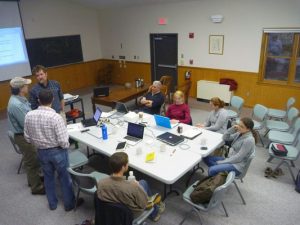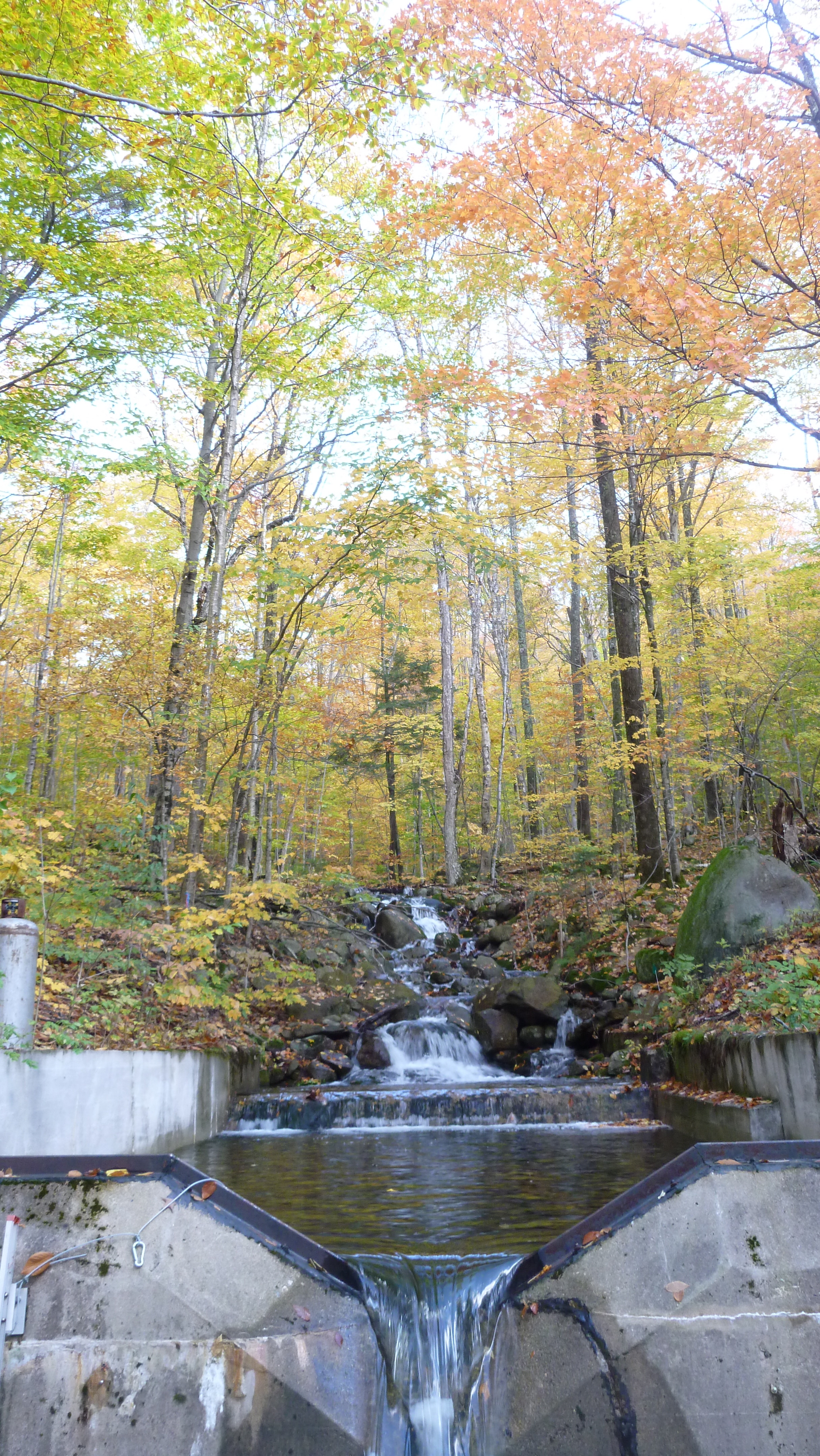
On Thursday afternoon our weekend was full of promise as Cody, Kevin, and I approached the airline check-in counter. We were flying to Hubbard Brook to meet with everyone on the hydropedology project for a day of meetings and then a day in the field. It was going to be fantastic. The only thing that stood in our way was a couple measly flights up the east coast.
Our mood was soon capped by a low cloud ceiling, for a period of time it didn’t look like we would get within 7 hours driving distance of Hubbard Brook that day. However, after a fortuitous un-delaying of our flight (what?!) we were able to make it to Boston and then drive to Hubbard Brook. Our 1:30am arrival seemed like a victory, even if we were supposed to arrive around 8:00pm.
What followed was about the best 2 day period a hydrologist (or hydropedologist) could ask for. It was dark and rainy for an all day meeting Friday, dampening our desire to be in the watershed and not in a meeting, and then mostly sunny, beautiful, and wet on Saturday for our day in watershed 3. You could not design a better scenario! Did I mention our days were punctuated with delicious meals with local ingredients from Pike Hill Farm (Scott’s)?
Friday was full of new hypotheses from all sides: Strontium isotopes, hydrometric analysis, soil chemistry, and geospatial analysis. We left the day updated on what everyone was up to and invigorated to think about our new ideas in the field on Saturday.
Saturday was outright exciting. I could hardly keep from running up to the weir to see how much flow we got from the rain the day before. (It had been dry all summer, I needed to see my watershed with WATER). We had a very productive day, and it was absolutely beautiful, not sure if it was peak foliage, but it was close.


The first thing that struck us as we hiked up to some of our intensive study sites was that a combination of the new leaf fall and the storm the day before allowed us to observe some channel relocation in action (see photo to the left). A leaf dam had blocked the main channel and the stream was flowing through the hillslope along a much more roundabout route to Paradise Brook. Further up into the watershed we arrived at one of my intensive sites, where we found my tensiometers, pore water samplers, soil moisture sensors, and wells in-tact and not bear-gnawed or moose-trampled. I was able to resolve some equipment issues and get the first water samples from our fancy pore water samplers!
After checking on more equipment, our field tech, Errin and I joined back up with the rest of the group and observed Cody getting to know the soils in the watershed as well as the getting familiar with some of our hypotheses. He even got a crash course in Hydropedological Unit identification. After discussing possible experiments and analyses to be done in the months and year to come, we headed down to an experiment in action!
 Mark Green from Plymouth State University had applied wollastonite to a hillslope down stream from the watershed 3 weir for a different experiment and Scott put in some wells to try and detect a breakthrough curve in the groundwater. Bonus tracer experiment! We sampled his 3 wells and two stream sites. To the left is the second stream site.
Mark Green from Plymouth State University had applied wollastonite to a hillslope down stream from the watershed 3 weir for a different experiment and Scott put in some wells to try and detect a breakthrough curve in the groundwater. Bonus tracer experiment! We sampled his 3 wells and two stream sites. To the left is the second stream site.
After debriefing at the forest service station and another delicious meal at Pike Hill farm Cody, Kevin, and I returned to our bunks at the forest service station ready for some sleep and another day trying to brave delays and such in a few airports. Except for a quick sprint through the Philadelphia airport, which Kevin dealt with incredibly for essentially having pneumonia, we made it home without a hitch!
It is back to the grind now, but I think we’re all reinvigorated with fresh memories of watershed 3 in the beautiful fall weather and fresh new ideas about how to describe our little corner of the natural world.
